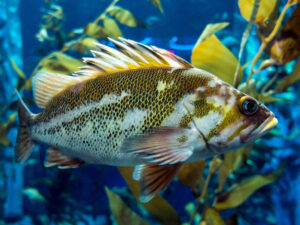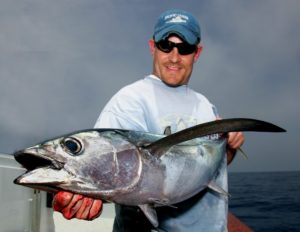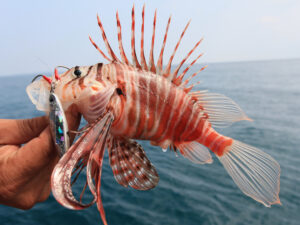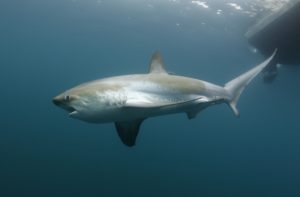Prodigious Perch
QUESTION:
I caught this fish in about 100 feet of water off Mar del Plata, Argentina. The guide called it a “white salmon.” I identified it as a Pseudopercis semfasciata, a sandperch. (That seems to be an unassuming name for a 22 pound beast!) Is this correct, and what can you tell me about this species? Is it related to tilefishes?
Steve Wozniak
Alamo, California
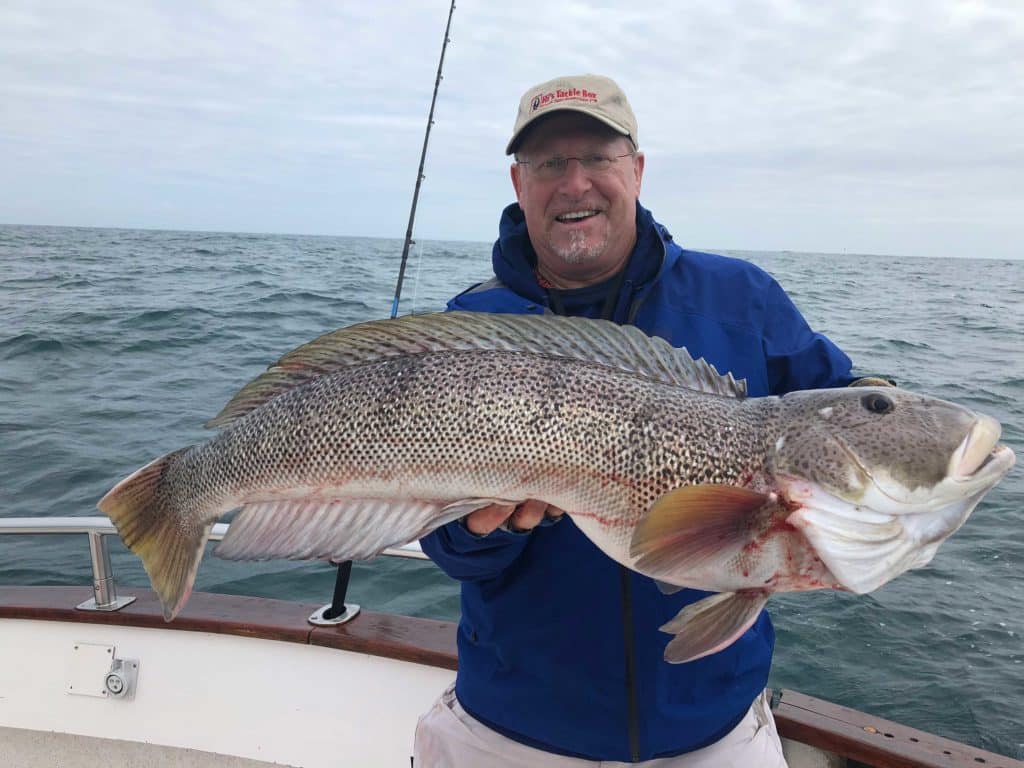
ANSWER:
Great job on both accounts, Steve: your catch and its identification! The fish is indeed Pseudopercis semifasciata, the Argentinian sandperch. It’s known to grow to a maximum length of approximately 3.3 feet, so yours appears to be close to the maximum recorded size. Only two genera and three species comprise the family Pinguipedidae, commonly called the sandperches, and all are restricted to the Southern Hemisphere. The Argentinian sandperch has been reported to range from Sao Paulo, Brazil, to Golfo San Jorge, Argentina, and is most commonly found over sandy and rocky bottoms to a depth of 330 feet. Not much information is available regarding this species’s biology, but it is sometimes targeted for sale in markets. Because of its low reproductive rate, it’s considered a species vulnerable to overfishing.
—Ray Waldner
Editor’s note: This catch has been certified by IGFA as the all-tackle world record for the species.
Wreck of the High Flyer
QUESTION:
Any idea what this fish is? Got him in 180 feet of water under a high flyer [longliner’s buoy] off the coast of Rhode Island in 71-degree water.
Marc Lacz
Westerly, Rhode Island
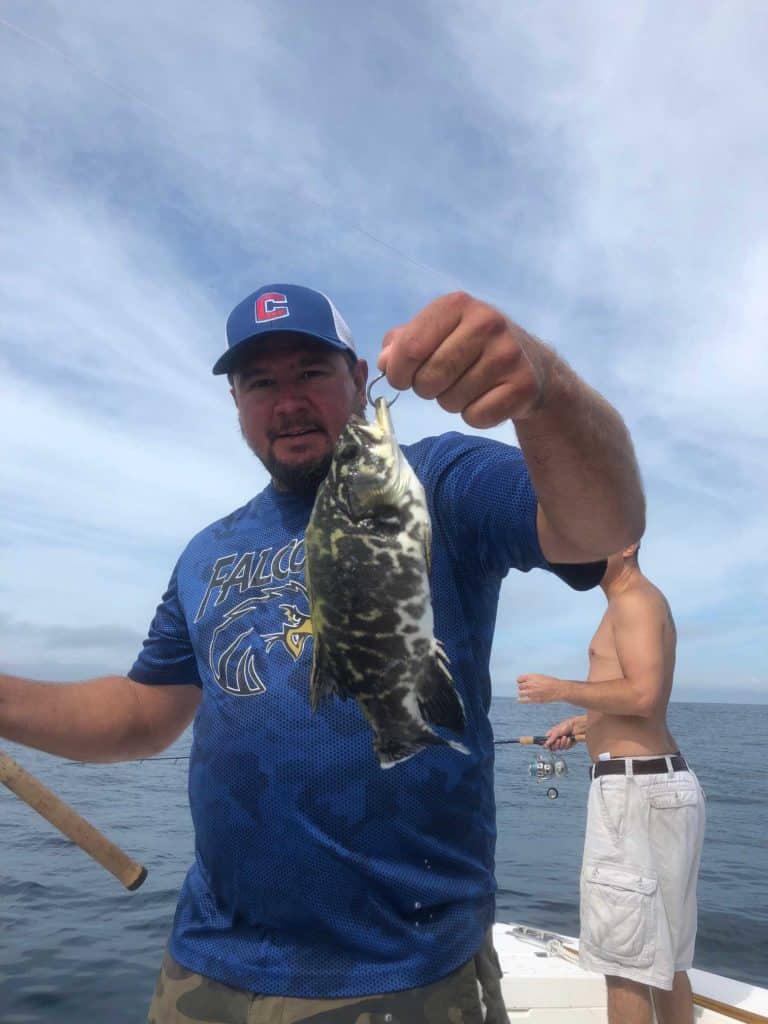
ANSWER:
What you have there is a pelagic juvenile wreckfish, Polyprion americanus. Features of this slow-growing, long-lived species include spiny ridges on the nape, over the eye, and on most bones of the opercles (gill covers). Although these are benthodemersal fish (occurring at great depths near rocky outcrops and deep reefs), in their young stages, they remain near the ocean surface until they reach about 2 feet in length. While in this near-surface habitat, they tend to gather under flotsam and jetsam, attracted to any floating structure (e.g., a longliner’s high flyer). Although the species is cosmopolitan, occurring around the world, genetic evidence supports categorizing North Atlantic and Mediterranean fish as a single population. When pelagic, juveniles drift around the North Atlantic Gyre and also occur in the Mediterranean Sea. Where reproduction occurs remains uncertain. To my knowledge, neither eggs nor larvae have ever been collected in the western North Atlantic.
As adults, wreckfish grow quite large: The all-tackle world record weighed in at 190 pounds, caught on Ranfurly Bank off New Zealand in 2010. There is a commercial fishery for this species on the Blake Plateau (deep habitat east of South Carolina and Georgia). The status of this stock is being monitored but is presently considered to be sustainable.
—Mike Fahay
Crustacean Invader
QUESTION:
We were checking some minnow traps in a shallow canal out at Cat Island, 7 miles off the coast of Mississippi, in August when the water temperature was close to 90 degrees. This crazy-looking critter was inside one of the traps. I am assuming it’s some sort of tiger prawn, but it doesn’t look like the pictures I’ve seen of them.
Capt. Sonny Schindler
Bay St. Louis, Mississippi
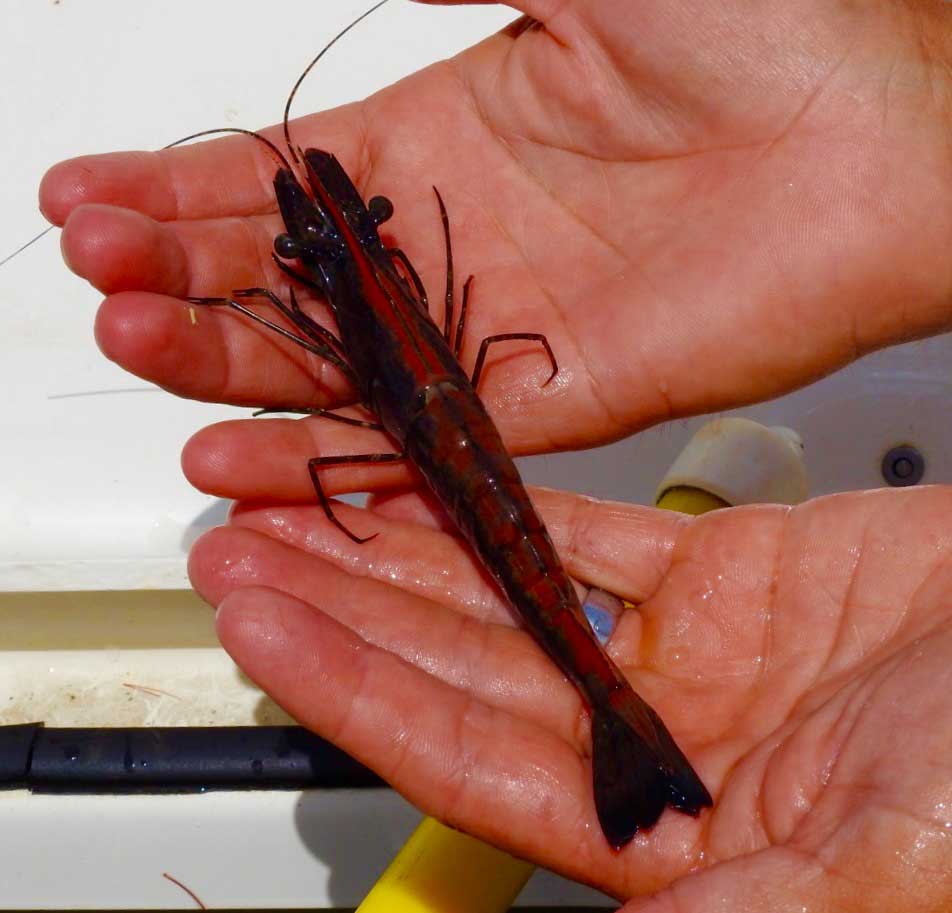
ANSWER:
Sonny, you guys caught a juvenile tiger shrimp, most likely. But it took some digging to finally ID it because the juveniles have a different pigment pattern than adults. Thanks to Dr. Larry Abele and his colleagues at Florida State University who finally ran it down. The tiger shrimp is an invasive species, native to the Indo Western Pacific, ranging from the East African coast to Australian waters. It’s a large species, exceeding a foot in length. Tigers are a species widely used in mariculture, and escapees might account for their origin in our waters. As with many invasive species (e.g., lionfish) there’s concern about their impact on native fauna. This is especially true with these shrimp because in the past decade, there has been a sharp rise in reports of tigers’ occurrence from the Carolinas to Texas. Federal agencies are carefully monitoring reports of capture, but there’s not much that can be done at this point. If there is an upside, it’s that these guys are considered fine dining, though one hopes they never negatively impact our native shrimp populations.
—Bob Shipp
Unwelcome Worm
QUESTION:
I found this creepy worm creature in the sink after cleaning some skipjack tuna (aku) that I had brined overnight. The 1- to 2-inch thing was clearly alive. The round dark area seemed to be the body portion, while the long end seemed to move like a worm’s head with a protruding tongue. What is this, and is it bad for the fish?
Len Nakano
Kona, Hawaii
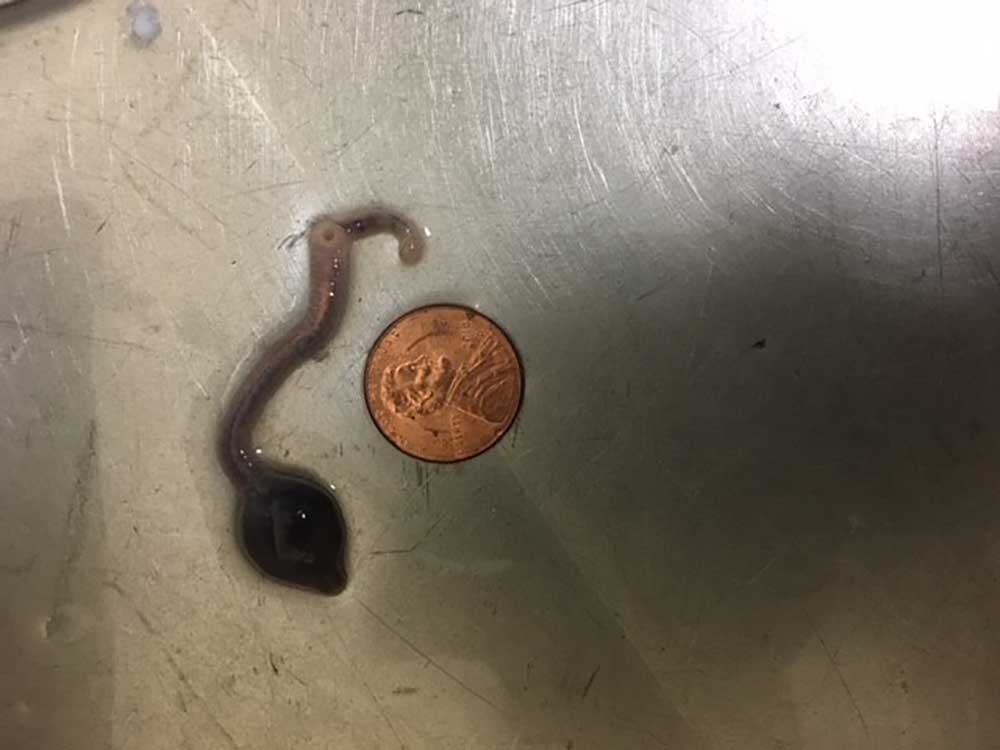
ANSWER:
Welcome to the world of marine parasitology! That is a digenean worm called Hirudinella, a member of a group of worms that live inside the stomachs of pelagic fishes. The main species of the genus is Hirudinella ventricosa, which infects mainly wahoo (ergo known as wahoo worms), but recent genetic studies suggest that the Hirudinella found in billfish and tunas (such as Hirudinella ahi from yellowfin tuna) are different but closely related species.
Digeneans are parasitic trematode worms that live in at least two hosts in their life cycle (“di” means “twice”; “genea” means “generations”). In this case, the final hosts are large pelagic fish, with adult worms living inside the stomach and laying many thousands of eggs that pass out the vent into the water. The eggs hatch into larvae, which penetrate mollusks (clams, oysters or even squid), which then become the first intermediate hosts. Further development occurs inside the mollusk, which releases a cercaria stage that either penetrates a fish as final host, or in the case of Hirudinella, the cercaria is most likely ingested by a smaller baitfish (or squid) in which the worm encysts and remains dormant until the baitfish host is eaten by a wahoo, billfish or tuna, where the worm will mature to adult size.
Hirudinella is a giant of the digenean world. Believe it or not, the worm you found in this skipjack is only a small one. Hirudinella ventricosa can reach more than 6 inches long inside the stomach of its preferred wahoo host. When alive, these worms are capable of contorting into various shapes, morphing from the shape of an outstretched finger to the size and shape of a walnut in a few seconds. The body portion you refer to is filled mainly with eggs, while the “head” end contains the oral and ventral suckers. These suckers attach to the stomach lining where they ingest blood, causing ulcers. However, since these parasites somehow regulate their own numbers (more than two will occur only in exceptionally large fish), there’s little evidence that they affect fish health.
—Ben Diggles
Youthful Yellowtail
QUESTION:
I work on the San Diego bait barge. We found this fish inside one of our receivers and were lucky enough to net it for a quick picture. It’s about 2 inches long. At first glance we thought it was a juvenile dorado. What is it?
Jonas Chavira
San Diego, California
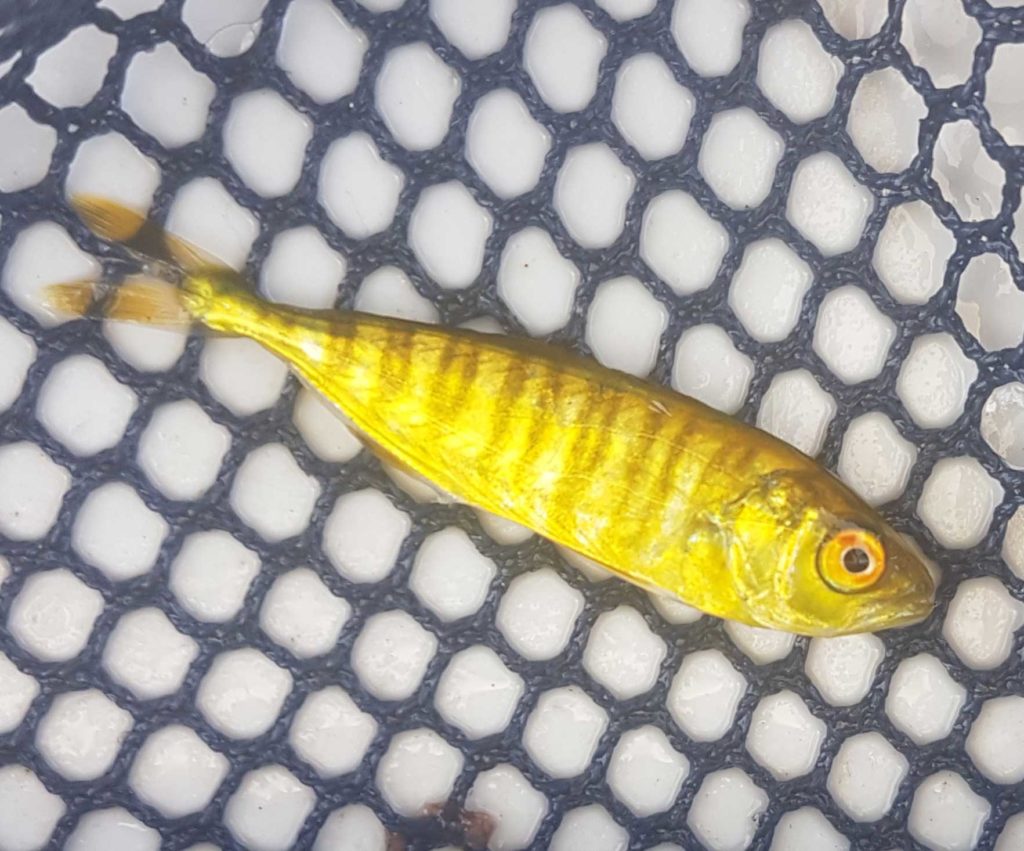
ANSWER:
Jonas, your little barred friend is a juvenile California yellowtail, Seriola dorsalis. Yellowtail spawn late spring through fall, so that fish is probably a few months old. Small juveniles often hang around drifting kelp mats, but you can find them also in kelp beds and quiet bays. What is particularly interesting about your catch is that during most years, yellowtail spawn south of California, where waters are warmer. However, the ocean off California in 2018, when you found this little fish, was extraordinarily warm; it looks like there were a lot of spawning yellowtail around then. Whether this becomes a permanent situation, which would mean a lot more yellowtail off California, remains to be seen.
—Milton Love
Read Next: Strange Fishes From the Deep: Roughhead Grenadier and More
Sport Fishing’s Prestigious International Panel of Experts
Northeast: Mike Fahay, Sandy Hook Marine Lab, New Jersey
Southeast: Ray Waldner, Ph.D., Palm Beach Atlantic University, Florida
Gulf of Mexico: Bob Shipp, Ph.D., University of South Alabama
West Coast: Milton Love, Ph.D., UCSB, California
Far Pacific: Ben Diggles, Ph.D., Queensland, Australia
Bluewater Pelagics: John Graves, Ph.D., Virginia Institute of Marine Science
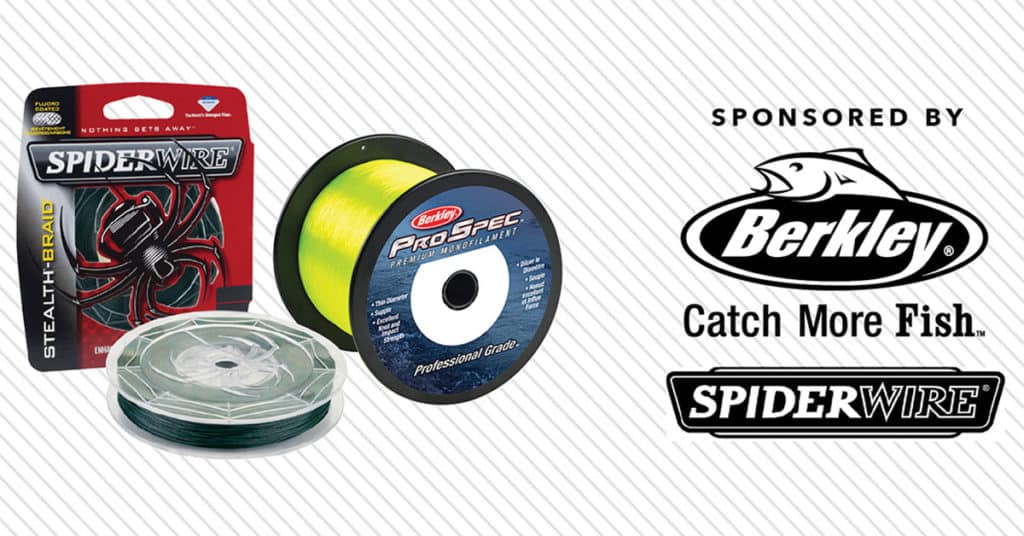
CHALLENGE OUR EXPERTS (And Win Up to 10,800 Yards of Line!)
Send in your question and any relevant photos of your mysterious catch or observation for our experts’ ID and feedback. If we publish your question and you have a shipping address within the United States or Canada, you’ll win a 3‑pound spool of Berkley Pro Spec ocean-blue or fluorescent-yellow monofilament (1,000 to 10,800 yards, depending on line strength) or a 1,500‑yard spool of Spiderwire Stealth braid up to 100‑pound‑test! Send questions and images via email to fishfacts@sportfishing.com (include your hometown) or via post to Sport Fishing Fish Facts, 460 N. Orlando Ave., Suite 200, Winter Park, FL 32789.

